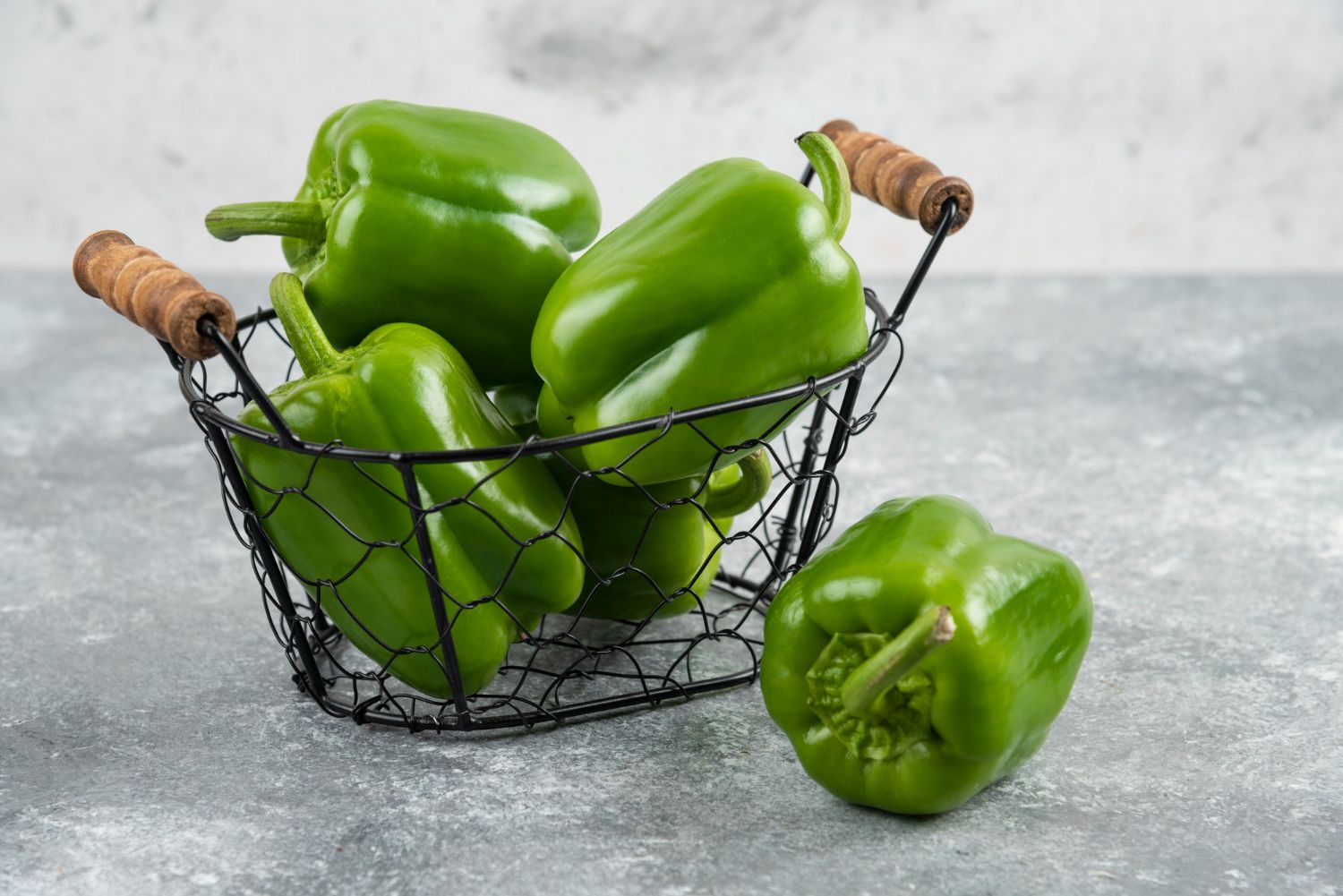Green pepper, also known as bell pepper, is colorful and versatile vegetable that can add a burst of flavor and nutrition to any dish. From salads to stir-fries, green peppers are a staple in many cuisines around the world. In this blog post, we’ll explore everything you need to know about green peppers, from their nutritional benefits to how to incorporate them into your meals.
What Are Green Peppers?
Green peppers are a type of pepper belonging to the Capsicum annuum species. They are characterized by their green color, crunchy texture, and mildly sweet flavor. Green peppers are typically harvested before they fully ripen, which is why they retain their green hue. However, if left to mature on the vine, they can turn yellow, orange, or red.
Green peppers are more than just a colorful addition to your plate; they’re packed with nutrients and offer numerous health benefits. Let’s look into why you should include more green peppers in your diet and some simple recipes to enjoy them.
Nutritional Benefits of Green Pepper
Despite their humble appearance, green peppers are packed with essential nutrients. They are an excellent source of vitamins A and C, which are important for maintaining healthy vision, immune function, and skin health. Green peppers also contain antioxidants like beta-carotene and lutein, which can help protect against chronic diseases such as heart disease and cancer. Additionally, green peppers are low in calories and carbohydrates, making them a great option for those looking to maintain a healthy weight.
Nutritional Value
Green peppers are low in calories but high in essential nutrients. Here’s a rundown of their nutritional content per 100 grams:
- Calories: 20
- Vitamin C: 80 mg (133% of the Daily Value)
- Vitamin A: 750 IU (15% of the Daily Value)
- Fiber: 1.7 grams
- Potassium: 175 mg
- Folate: 10 mcg
Health Benefits
Immune Support
The high vitamin C content in green peppers helps support a healthy immune system, protecting you from illnesses like colds and flu.
Eye Health
The presence of vitamin A and other antioxidants in green peppers promotes good vision and may reduce the risk of age-related eye diseases.
Heart Health
Potassium in green peppers helps regulate blood pressure, reducing the risk of heart disease and stroke.
Digestive Health
The fiber in green peppers aids digestion, prevents constipation, and supports a healthy gut microbiome.
Weight Management
With their low calorie and high fiber content, green peppers can help you feel full and satisfied, making them a great addition to weight-loss diets.
Simple Green Pepper Recipes
Green peppers are incredibly versatile and can be used in a variety of dishes. Here are some simple ways to incorporate them into your meals:
- Stir-Fry: Heat oil in a pan, add sliced green peppers, along with your choice of protein (chicken, tofu, etc.), and stir-fry with soy sauce and garlic until tender. Serve over rice or noodles.
- Stuffed Peppers: Cut the tops off green peppers, remove seeds and membranes. Fill with a mixture of cooked quinoa, black beans, diced tomatoes, and spices. Bake until peppers are tender.
- Green Pepper Salad: Combine diced green peppers with tomatoes, cucumbers, red onion, and feta cheese. Drizzle with olive oil, freshly squeezed lemon juice, a pinch of salt, and a sprinkle of freshly ground black pepper.
- Fajitas: Sauté sliced green peppers with onions and strips of beef or chicken in a skillet. Serve with tortillas, salsa, and guacamole for a tasty Tex-Mex meal.
- Grilled Veggie Skewers: Thread chunks of green peppers onto skewers along with cherry tomatoes, mushrooms, and zucchini. Brush with olive oil, sprinkle with salt and pepper, then grill until tender.
- Salads: Chop green peppers and toss them into salads for added flavor and texture.
- Fajitas: Sauté sliced green peppers with onions and your choice of protein for tasty fajitas.
- Kabobs: Thread chunks of green peppers onto skewers with other vegetables and meats for flavorful kabobs.
How to Select and Store
When choosing green peppers at the grocery store or farmers’ market, look for ones that are firm, glossy, and free from blemishes or soft spots. The stem should be fresh and green. Avoid peppers that feel lightweight or have wrinkled skin, as these are signs of aging.
To store green peppers, place them in a plastic bag and store them in the refrigerator.If you have an abundance of green peppers, you can also freeze them for later use. Simply wash, chop, and remove the seeds before freezing in an airtight container or freezer bag.
Green peppers are not only delicious but also nutritious additions to your diet. Whether you enjoy them raw in salads or cooked in your favorite dishes, green peppers offer a myriad of health benefits and culinary possibilities. So next time you’re at the grocery store, be sure to pick up some green peppers and get creative in the kitchen!
Incorporating green peppers into your meals is an easy and delicious way to boost your nutrition and enjoy a range of health benefits. So why not add some vibrant green peppers to your next grocery list and get cooking?

